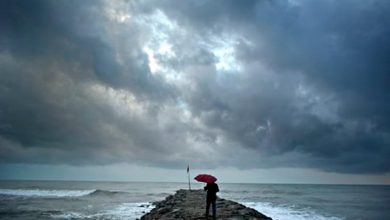Punjab: Security agencies increased surveillance on dams and main roads

Punjab: Keeping in view the emerging security situation after India suspended the Indus Water Treaty (IWT) as a retaliatory move against Pakistan following the April 22 terror attack in Pahalgam that killed 26 people, security agencies have stepped up surveillance at major dams and headworks in the region. According to sources, a general alert has been issued to avoid any untoward incident initiated by inimical elements. “The dams themselves may be resilient to terror attacks but the possibility of peripheral structures, transmission lines, small installations or even staff being targeted cannot be ruled out,” a senior officer said. “More than any physical damage, it is the psychological impact or even a minor incident that matters,” he added. Sources have also pointed to several recent incidents of grenades being hurled at police stations and other places in Punjab, as well as frequent recoveries of weapons near the international border in Punjab, believed to have been dropped by drones from Pakistan, necessitating heightened security measures in the wake of a confrontation between India and Pakistan over the terror incident.
The increased vigil at the dams comes at a time when security forces, especially the Border Security Force which is responsible for the peacetime management of the India-Pakistan border, are on high alert, and the Air Force and several Army contingents are engaged in their regular field exercises. There are three major dams in Punjab and Himachal Pradesh. The Bhakra and Pong are located on the Sutlej and Beas respectively in Himachal Pradesh, and Thein is located on the Ravi in Punjab. Besides, there are several power houses, barrages and headworks downstream of the dams as well as on several canals and water bodies forming the irrigation network in Punjab, Haryana and Rajasthan. Some barrages like the Ferozepur and Madhopur are located close to the international border. Dams, barrages and canals control and regulate the flow of water from the above three rivers and ultimately only a small quantity of water from these rivers is allowed to pass into Pakistan. Under the IWT signed in 1960 between India and Pakistan, India had exclusive rights over the use of water from these three rivers. As per the terms of the treaty, most of the water from the Indus, Jhelum and Chenab rivers flowing through Ladakh and Jammu and Kashmir goes to Pakistan.
The Bhakra, Pong and Thein dams are high value strategic assets. They have a combined hydropower generation capacity of 2,375 MW and irrigation potential of 10,24,000 hectares. In addition, the Kol Dam upstream of Bhakra has a hydropower potential of 800 MW and there are several other run-of-the-river hydropower projects on rivers in Himachal as well as Jammu and Kashmir. Hydropower projects in Jammu and Kashmir were already under tight security cover due to the terrorist threat. Intelligence agencies keep a close watch on the threat perception about these installations and there have been several occasions in the past when warnings have been issued against potential terror attacks. The respective police forces of the states where these projects are located are responsible for the security of these installations and monitoring of access routes. Starting with the Beas-Sutlej link, a canal connecting these rivers in Himachal, the Central Industrial Security Force will replace the state police forces. Over the years, security measures have also been enhanced at these dams, with additional manpower deployed and protective gadgets and access control equipment installed, sources said.




